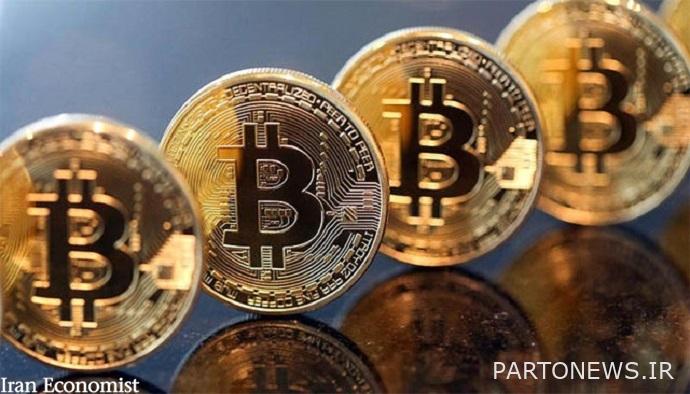Digital currencies, when nationalized

Digital currencies, although they seem to be an emerging phenomenon; But they have quickly been able to influence the atmosphere of financial transactions. The main feature of digital currencies is their non-nationality and independence from national currencies. Thus, the central banks of the countries are not able to control the transactions of digital currencies and do not supervise the transactions that take place with these currencies. As a result, many countries are trying to change the situation by creating “national digital currencies.” The main question is what is the national digital currency and is it possible to create such a currency?
A phenomenon that transforms national economies
“National digital currency, or the so-called central bank digital currency, is a relatively new concept in the world of digital currencies that has recently been considered by the central banks of many countries, and even some countries have implemented it,” said Pouya Bahmani, an expert on digital currencies. They have experimented with its production. The national digital currency is, in fact, the digital form of the currency of countries, to create which central banks issue digital tokens instead of printing paper banknotes and minting coins. “National digital currencies are easily converted into other common currencies, and their value will be equal to the value of the issuing national currency.”
It must be acknowledged that the national digital currency is also moving to address the security and regulatory concerns of governments.
It is interesting to note that the value of the national currency is in line with the national digital currency of the same country, and the above question raises the question of what is the need to produce a national digital currency in this way? In response to this question, Bahmani said: “First of all, it is necessary to say what was the need for the idea of forming a national digital currency. The main reason for this idea is the reluctance to use common digital currencies in everyday transactions to buy goods and services due to their sharp price fluctuations against national currencies. In fact, the national digital currency is a tool that can tie the world of cryptocurrencies much better and more effectively to the financial and economic life of households and businesses, and benefit all economically active groups from the benefits of the world of cryptocurrencies. Of course, in addition to the reason mentioned, it must be acknowledged that the national digital currency is also moving to address the security and regulatory concerns of governments, and many activists in this field consider the reason for the creation of this type of digital currency. By creating this type of money, governments will be able to control and monitor large-scale financial transactions in the cryptocurrency world, which is somewhat at odds with the primary purpose of cryptocurrencies, which is decentralization and the lack of centralized oversight of government institutions in financial transactions. ».
Currency to fight sanctions
Another important question about national digital currencies is their different types and forms. It remains to be seen how national digital currencies can be produced, traded and transferred. “National digital currencies are offered by the central bank in both wholesale and retail,” Bahmani explained. In the wholesale model, the existing ranking of banking and financial institutions is used to perform transactions. One of the applications of this type is interbank payments, where the national digital currency can greatly reduce the risk of non-compliance. The retail model promotes interbank transfers and eliminates the risk of intermediation and liquidity of the banking system. This model will be available in two forms: the first case involves currencies that are transferred to the recipient through a pseudo-digital wallet, but the second case is similar to the access provided by a bank account in which an intermediary responsible for the recipient’s authentication and monitoring “It will focus on illegal activities and payments between accounts.”
One of the features of using national cryptocurrencies is much lower transaction cost and much higher transfer speed.
But what are the benefits of national digital currencies, and what opportunities will the production of such a currency provide a central bank? “National digital currencies provide many benefits and capabilities for the payment system and monetary network of countries,” the digital currency expert added, referring to the benefits of national digital currencies. They will help governments better define monetary policy through a wholesale model to automate processes in the interbank network and a retail model to connect consumers directly with central banks, as well as optimize the tax collection and collection process. . From the perspective of risk reduction in transactions, the use of this type of currency will reduce the liquidity risk of banking intermediaries. In terms of accessibility, this monetary system will be much more comprehensive and accessible, and people deprived of traditional banking services, especially in poor countries, can connect directly to central banks without the need for expensive infrastructure required by the traditional banking system. Another advantage of this system is the much lower transaction cost and much higher transfer speed compared to the previous banking system. “Therefore, in general, every citizen, both in developing and developed countries, can use this system to significantly increase the scope and quality of financial services they receive.”
National digital currencies and the shortcomings that exist
Despite the advantages mentioned, national digital currencies also have disadvantages, which can lead to many questions. Regarding the disadvantages, Bahmani reminded: “The use of these currencies has disadvantages that can not be easily ignored. The most important issue is the centralization and existence of the government as a governing body in this system that has the ability to monitor, control, create a blacklist of network addresses and even return transactions in full, and therefore acts very similar to the traditional banking system. ».
He added: “Of course, these features can not be considered as absolute disadvantages of this network; Because there are many individuals and legal entities that want to benefit from both the security of the traditional banking network and the benefits of the blockchain network, this idea may be a response to the needs of this group of people. What is certain is that users of this network will certainly lose some of their financial privacy unlike non-national digital currencies. “Legislative and legal issues related to this type of currency, especially with regard to transactions between countries, are still fraught with ambiguity, which can lead to political and social disputes at the international level.”
The path that has just begun
Despite the advantages and disadvantages listed, the discussion of national digital currencies seems to be just beginning, and many countries are interested in following this path. Regarding the countries’ plans to produce national currency, Bahmani explained: “So far, more than 80 countries have entered the field of national digital currency, led by China. Since 2014, the country has developed a comprehensive program to introduce digital yuan. “After that, the central banks of countries such as Russia, Sweden, the United Kingdom, Canada, Uruguay, Thailand and Singapore have also launched projects to spread their digital currencies.”
Analyzing the possibility of producing national currency in Iran, the capital market expert also said: “In recent months, the officials of the Central Bank have announced the release of national digital currency, which considering the political and economic conditions of the country, this decision For the country. In fact, if it is possible to create national cryptocurrencies, this tool can be used in bilateral agreements with neighboring countries; “These currencies do not need Swift or even a global blockchain.”
“In other words, blockchain is a global platform and network that can be used like Swift and telecommunications,” he added. Creating a national digital currency is the first step in moving the country’s banking system towards China’s blockchain technology, which from this perspective can bring a lot to the future of Iranian banking. Other benefits of this type of currency for the country’s economy include reducing the use of paper money, the ability to attract investment and manage current liquidity in the economy. The use of Iran’s national digital currency in the first phase as tokens and payment tools for interbank exchanges and in the second phase is micropayments between members of society. Another feature of this digital currency is the development of the Know Your Customer registration and authentication solution on the Chinese blockchain platform; “It can be used in a homogeneous network in other banks as well.”
IRNA

